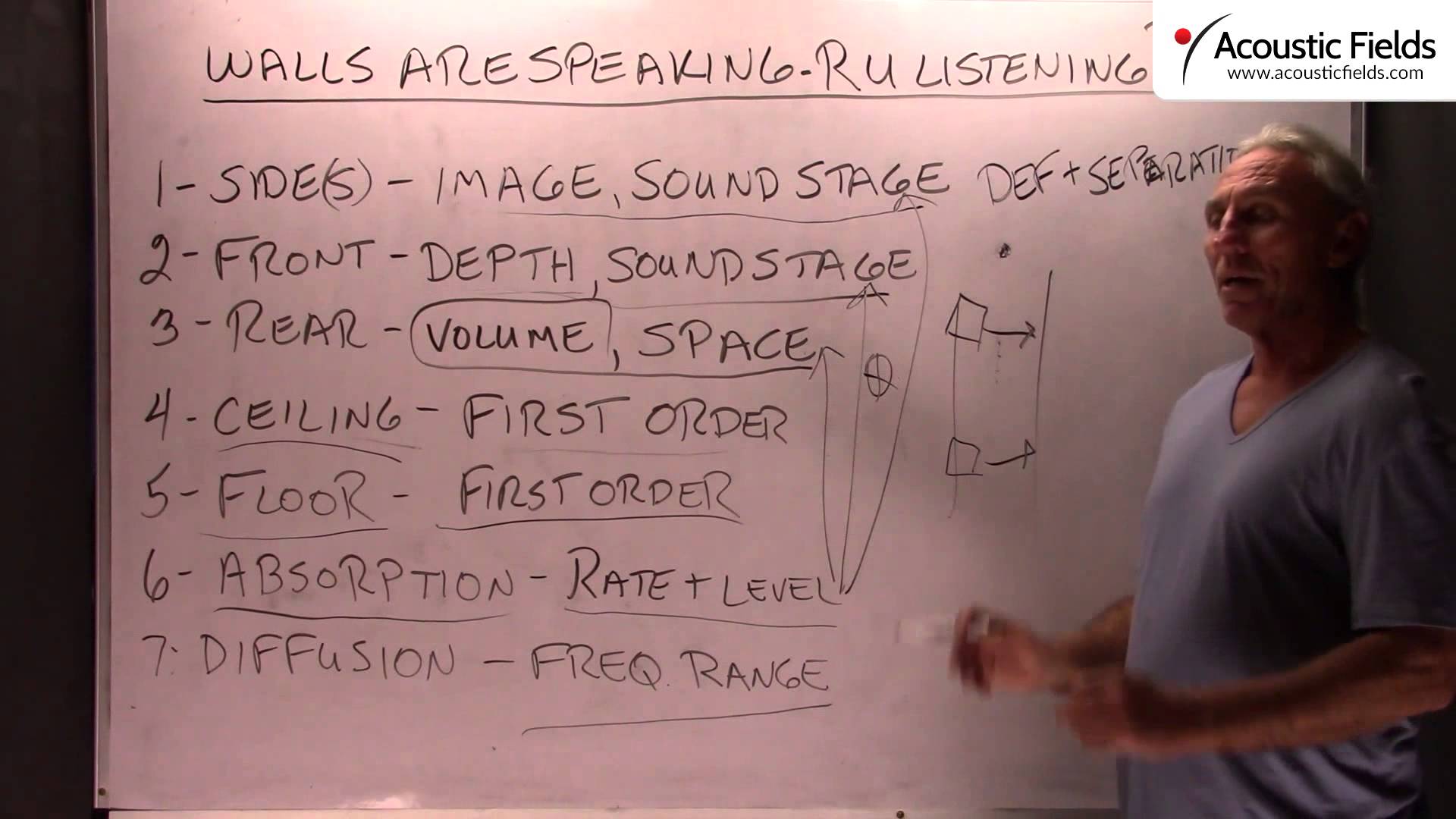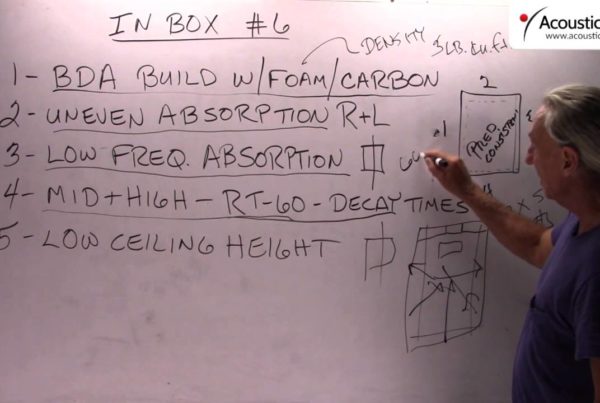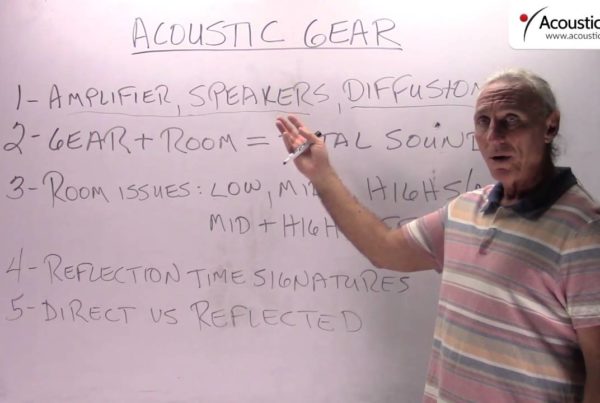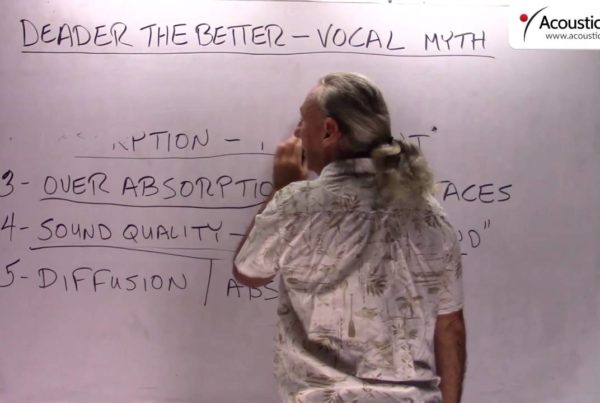Today we’re going to talk about your walls are speaking but are you listening?
I don’t think so sometimes when I talk to people about the acoustics and the things that go on within a room. So let’s break each wall surface down and see what the impact it has on our presentation. Well, we all know that our side walls are directly responsible for image, the width of our sound stage, the focus of that image, the definition and separation. So the sidewalls really play a big part. Really play a big part in creating our sound stage and our image and our focus on that sound stage.
The front wall is all about depth. All about space. If your speakers are really close to the front wall and then your listening position is really close to that, then you’re not going to have a lot of depth in your presentation. Everything is going to kind of be on the same plane psychoacoustically as your speakers. So you have to watch the distances between the speakers and the front wall and then obviously apply the correct treatment. So the front is all about creating that depth or that sense of no wall being there I guess would be a good way to say it.
The rear is all about volume and space. You know, that bounce back, that slap back echo if you will, high reverberation from the rear wall is a big, big problem. And it makes the room feel and sound a lot smaller.
Ceiling; ceiling and floor, these are first order reflections. You’re sitting on the floor, there’s not going to be a boundary surface you’re closer to than the floor itself. So the bounce off the floor is critical, the bounce off the ceiling is definitely critical. So you want to be really careful.
Ceilings, the best way to treat ceilings and floors is to try to make them go away acoustically. So you’re not going to really achieve any of these characteristics with the floor and ceiling treatment but you want to make sure they go away. And there’s different treatments that we can use for that.
One of them obviously is absorption. I see so many errors in this all the time. There’s no one size fits all for absorption. You have to look at the rate and level and you have to apply that rate and level to the surface that you’re treating. There is no one size fits all. So you have to be very careful about what you’re using. The side rate and level of absorption can’t be different than the front wall and ceiling. All these have to work together.
Consistency, uniformity, predictability. Those are the things that you have to have. So diffusion is our other technology that we have. A diffuser is really a speaker. There’s a particular frequency range, that frequency range must be respected because each wave and each ray have a length and those lengths have to be respected with seating position.
So if you’re going to put diffusion on the front wall, you want to make sure that when the energy goes into that diffuser and comes back out, just like a speaker, both sets of energy working together, that you have enough distance here so that the energy that comes out of the diffuser can fully form and washes over the listening position and you can hear it.
So everything is related. Size image and sound stage, front depth sound stage, rear volume, spatiality, ceiling – first order and second order reflections from floor and ceiling – we just want to eliminate those and then we use absorption and diffusion in our technique.
So your walls are speaking and you really have to listen if you’re going to maximize the usage of the room and what you’re trying to do.
—
This is an unedited transcript from our video series from Acoustic Fields. There will be some errors in grammar and sentence structure that occur during this translation process.
For complete understanding and comprehension, please view the video which is included in this text. For any additional information regarding this topic or others relating to room acoustics, please contact us directly at:
P: 520 – 392 – 9486







